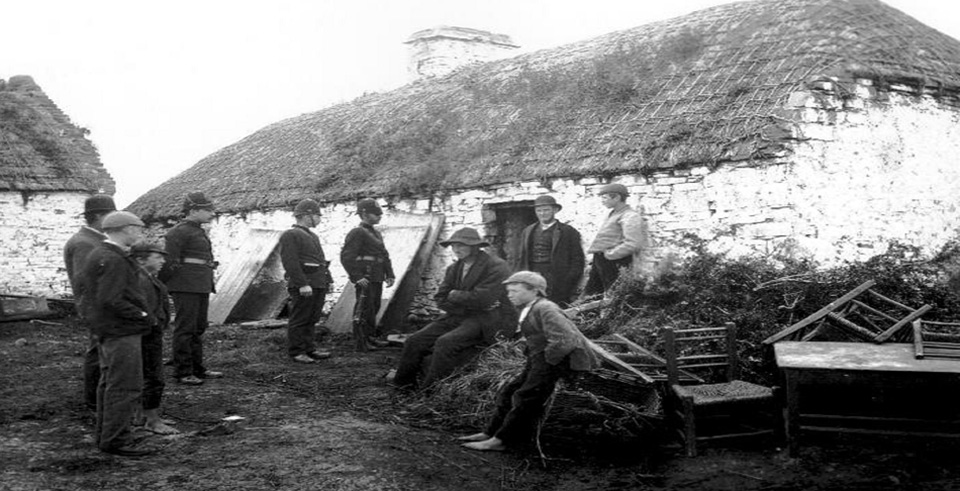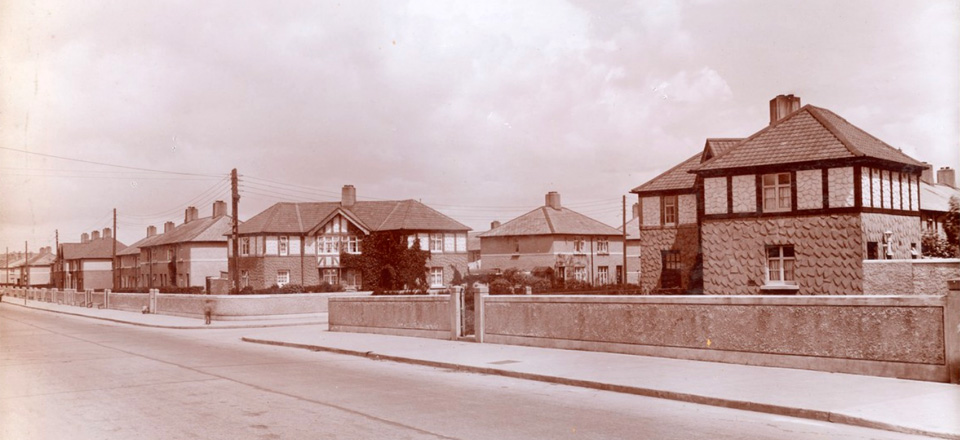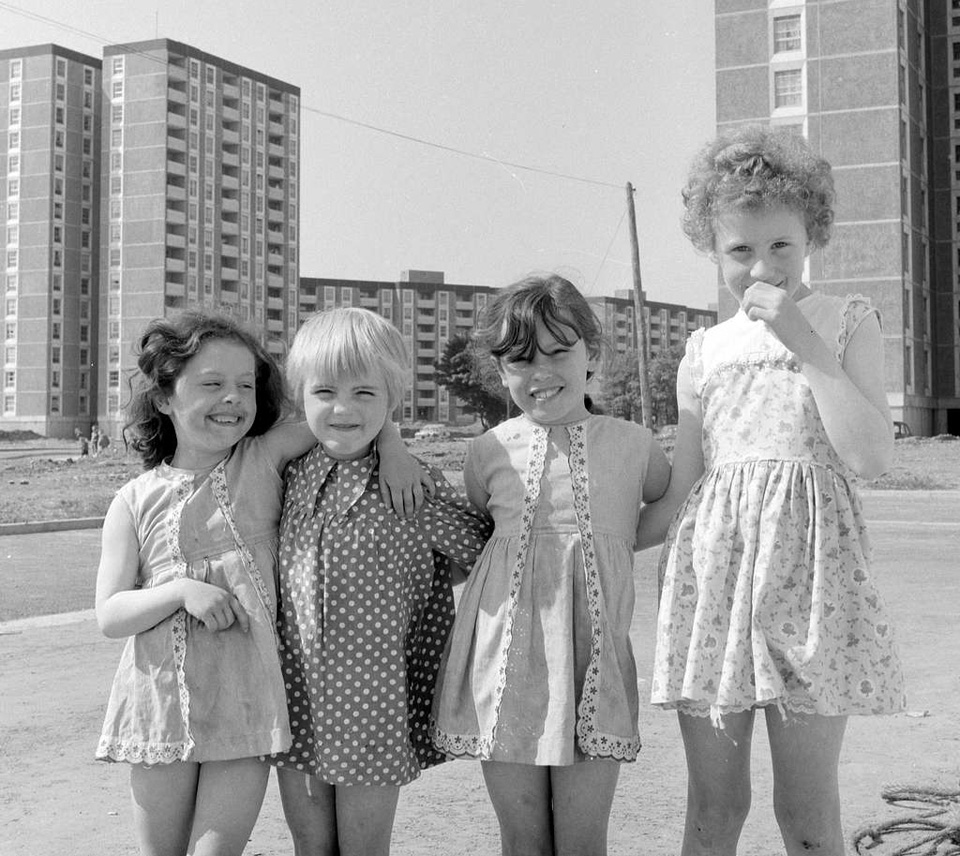How to provide it is one of the most contentious political issues, especially where current provision appears unable to cope with projected increases in population.
Public housing and other state interventions are sometimes erroneously linked to the political power of the left, but, in fact, along with transport, basic utilities, education, and health the public provision of homes long predates any left-wing party becoming part of government.

It is a false dichotomy therefore to pose the question of such state intervention as a left/right issue.
For the Irish Land League, the central objective had been to win security of tenure, or Fixity as it was encapsulated in the three ‘Fs’ along with fair rent and free sale; the latter of course being inseparable from the private ownership of the land that was occupied by the tenant farmers, which is the only guarantor all things being equal of fixity or security of tenure. Very few were convinced by Michael Davitt’s proposal that private landlords ought to be replaced by the state.
 |
| Crolly Family eviction. The Land League was set up with a central objective of security of tenure, fair rent, free sale |
Such an approach might perhaps be applied to the current housing problem. For a growing number of people the issue of fair rent, and indeed one that is not subject to arbitrary increases, is central.
It should also be the unabashed objective to encourage family home ownership through tax incentives and other means. Taxation is always used to encourage the type of housing market preferred by the state, so why not use it to encourage one that will benefit Irish families?
Ability to pay, and the ability to find adequate living space, is also connected to security of tenure. Free sale of course is only relevant to the falling numbers of people who either own their own home, or are among the fortunate minority to be given mortgages.
Irish people need answers to this, and they are inextricably bound up with the overall direction in which the country is headed. Before getting into all of that more deeply, perhaps an overview of what earlier housing policy has been might provide some context.
There is quite a range of information that can be gleaned from Acts of the Oireachtas, Dáil debates, white papers, CSO statistics and some excellent histories of housing and related issues. Chief among these in terms of sheer scope is Dr Padraic Kenna’s monumental Housing Law and Policy in Ireland which was published in 2006.
Much is made now of the issue of “social housing” with quotas having been set for the percentage of units designated as such in any private development, whether of houses or apartments. This has come to replace the almost complete withdrawal of the state from the actual construction of homes that would then be rented out to people on local authority lists.
Long before “social housing” became a political meme (which to oppose would be like hating puppies), the provision of adequate housing for those on lower income has been central to housing policy. Earlier state policy was also clearly family oriented, as opposed to the developer led transient accommodation increasingly prevalent.
It is worthwhile to remember that right back to the years of the Depression, the average annual house completions between 1932 and 1942 was 13,220 – which actually outstripped the average built in the state between 2009 and 2018, which was just 10,500. Dr. Padraic Kenna’s observation that “… traditional notions of Irish Catholic, nationalist or republican communitarianism for concern for the poor have been now displaced in favour of market oriented philosophies,” seems to be supported by that evidence.
 |
| Cabra housing scheme for Dublin Corporation in 1930’s. © Unknown. Digital content by Dr. Joseph Brady, published by UCD Library, University College Dublin |
Keane’s point is a vital one: the drive to provide houses was driven by motivations that may now be in decline or are not to the fore in many of the policymaking and politicking on the issue. Keane himself, however, seems to prefer a policy more in line with the increasingly “diverse” and labour market driven agenda.
The first Fianna Fáil governments after 1932 radically changed the state approach to housing. The 1932 Housing Act increased existing subsidies to facilitate people buying their own home, and the rate of home construction increased significantly. Between 1923 and 1931, just 26,500 new houses were built. That increased to 82,000 in the first ten years of Fianna Fáil power.
The state also, apart from the subsidies and other incentives, played a far more central role in actual construction. 60% of the new builds between 1932 and 1942 were by local authorities.
By 1940, 41% of the state’s housing stock had been built by local authorities. That compared to 25% in England and Wales. However, there was a clear intent unlike in countries like Britain and as currently favoured by Sinn Féin and others, that families who were given public housing would not only have the possibility of buying their own home, but the incentives to buyers and builders greatly encouraged that.
Families owning their own home was regarded as a social good, and nothing in subsequent experience either here or in any other country suggests differently. Indeed, countries like Hungary and Poland, and several major political parties in the rest of Europe have made that central to their housing policies.
Most working families who were enabled to have their own home, and to buy it out, regarded that as a perfectly sensible thing to do. The community cohesion and development and the life prospects of people in such estates contrasted significantly with those that pertained in wholly council owned estates where people decided not to avail of the terms to buy their own home and which some would argue became virtual dumping grounds to house “problem” families, and some would claim contributed to the disintegration of traditional households.
Home ownership remained very strong and by 1977, 70% of homes were owner occupied, compared to 16% local authority rentals and 14% privately rented. The private rental sector was overwhelmingly comprised of younger single people at an early stage of employment and personal development. It was not regarded as a long time much less a lifetime preference or necessity.
Over 60,000 new local authority houses were built in the 1970s but that was balanced by the sale of the same amount to former tenants. For the first time. Private builds greatly outnumbered public housing with 179,000 privately purchased homes built in the same decade, a ratio of 75:25. The annual completions averaged almost 24,000.
What would now be termed “social housing” remained a problem, with the National Building Agency, established in 1960, taking the blame for what turned out to be unsuccessful projects, most especially the Ballymun high rise towers, but also poorly constructed local authority estates on the outskirts of Dublin, Limerick, Cork and Galway with little effort made to ensure that local infrastructure kept pace. The creation of a permanent spatially isolated class of state tenants proved to be a major error.
 |
| Children playing in Ballymun in the shadow of high rise tower blocks. Credit National Library Ireland; PICRYL |
125,736 local authority and another 22,850 local housing association (between 1990 and 2020) homes were built between 1980 and 2012. The peak year for local authority builds in that period was 7,002 in 1984, which fell to an average of less than 3,000 in the 1990s, before rising to an annual average of over 5,000 between 2000 and 2010. The financial crisis saw that plummet to 810 in 2011 and 714 in 2012.
That coincided with the biggest surge in construction in the history of the state. Between 1998 and 2008 inclusive, there were almost 700,000 new homes completed. This accounted for over 35% of the overall housing stock of some 1.9 million in 2008. Annual completions peaked at 93,000 in 2006.
By that year, however, there were over 200,000 vacant units giving rise to hundreds of so-called “ghost estates.”. One of the significant aspects of the building boom was that 25% of the new builds were apartments which by 2008 accounted for 10% of the overall housing stock. Some would argue that the encouragement of mass immigration since that time was in large part motivated by the need to provide people to take up the surplus accommodation.
Nonetheless, most of the new homes were being bought privately, and owner occupiers made up 73% of households in 2006. The number of local authority rentals had fallen to 7.2%, less than half of what it had been in the late 1970s, and compared to 18.4% of all homes in 1961.
Most of the purchase of new homes was through mortgages, the value of which was €115 billion in 2011. The banks had approved 673,000 mortgages between 2005 and 2008, 125,000 to first time buyers. At the end of 2012, there were 95,000 mortgages in arrears.
Local authorities had facilitated the increase in ownership through shared ownership schemes under which people could buy a house, pay half of the original purchase price in rent to the local authority and then re-mortgage through a private institution. The level of existing debt forced the local authorities to abandon the scheme in 2011, but there is nothing in principle wrong with that approach.
The overall public housing budget in 2008 was €1.45 billion, but the amount spent on shared ownership had fallen from €225 million in 2002 to €75 million. More of the state housing spend was going towards rental supports, which was seen as actual support for private landlords by subsidies. Over €3 billion was budgeted for this for 2018-2021.
 |
| “Housing scheme for NBA, Ballybrack Co. Dublin (111 no.s) in 1978,” held by Assoc. Prof. Joseph Brady. © Unknown. Digital content by Dr. Joseph Brady, published by UCD Library, University College Dublin |
In 2017 the number of households in receipt of Housing Assistance Payment was projected to increase to over 83,000 compared to 29,000 at the end of 2017. All of this comes under the rubric of “social housing”, and although it has been criticized as a poor substitute for actual local authority provision, like all welfare payments, once it is in place no-one in politics is going to argue for it to be dispensed with.
As house prices rose exponentially during the boom, and despite the oversupply, house prices greatly outstripped the increase in average income. In 1995, the average house price was around three times the average annual income. By 2006, it was closer to ten times. The financial crisis had a massive impact on Irish households, with total estimated household wealth falling from €525 billion in 2007 to €289 billion in 2011.
All of that is some insight into how housing policy has changed, and how much more dramatic those changes have been since 2000. Crises such as the one that followed the property boom and then the financial collapse have completely altered the shape of the Irish housing sector.
The structure of ownership in particular is under much greater scrutiny than before, especially given the increasing dominance of the private rental sector and the buying up of residential property by investment funds.
The original social aim of the Irish state to promote private family home ownership and stable communities is no longer central to either current government policies nor those of the opposition. One of the reasons for that is that even the objective of social stability takes second place to the dictates of whatever a globalized economy might impose.
One of the proposals that is popular among a range of political and economic perspectives is that there ought to be some planned correlation of supply and demand rather than wait for that to happen.
Migration is therefore key, as future housing demand is being made dependent on an unknown quantity. Therefore those on left who propose planning, completely contradict themselves by excluding concerns about the effect migration will have on demand from any plan.
Were the state to become more directly involved in housing supply, there is a substantial tranche of land not only in public ownership, but already zoned for housing. The tendency in recent years has been for state bodies to sell off land to private investors, which we previously highlighted in the case of the sale of former CIE property in Dublin to a housing investment fund.
In 2018 research by Mel Reynolds found that there was over 3,000 zoned hectares in public ownership, enough he said to build 114,000 homes. The state owned over 17% of all undeveloped zoned land. The potential impact that the use of this land would have if used by local authorities to build houses is perhaps the elephant in the corner, as it is argued that this would impact negatively on the value of land which in 2006 had risen exponentially to almost €60,000 per hectare, by far the highest in the then EU 27.
The potential use of this land for housing needs to be seriously looked at, given that the state is already spending a large part of its budget on housing anyway. Surely the use of land already in public ownership would make sense? Nor need the state itself do the actual construction. Other countries allow private companies to build and to sell houses on publicly owned land once that does not conflict with overall balanced development centred on the provision of family homes.
 |
| Less and less people own their own home or have security of tenure |
The experience of this state and others proves that state intervention is not an ideological one other than at the extremes of radical free market advocates, and those who believe that most housing ought to be controlled by the state. Neither clearly works.
As we have seen, public housing began long before any conventionally left party ever took power in one of the western democracies. Public housing was no more regarded as an ideological totem than was the public provision of sewerage, roads, postal service, policing, safe water supply and many other areas that are now taken for granted are best not left to market mechanisms. Had they been profitable to run in the first place, they would never have become publicly run.
On the other side, the experience of the socialist states proves that complete state control and the ending of private property in housing is similarly ineffective. There was no private land or housing market in the Soviet Union and yet it abysmally failed for 70 years to provide decent housing, especially in the cities.
Cuba with an entire island of state owned land has a housing shortage of over 600,000, half of it in Havana. Even the milder municipal socialist experiments of high rise apartments in European cities have generally been adjudged to have been failures in terms of quality of life. They are also reflective of a statist mentality that measures human living standards solely in basic material terms.
It is perhaps not fashionable, but in this “Decade of Centenaries” we might not only reconsider the deeds of that period, but some of the thinking that inspired the people who were part of it.
Their motivation was the betterment of the people of the island, and was unhampered mostly by any ideological constraints. A good starting point might be to implement the type of thinking that encourages family home ownership, and assists younger house buyers through taxation and other incentives.








No comments